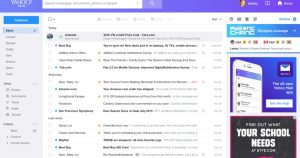In today’s fast-paced world, efficiency is key. Whether you’re a student trying to keep up with lectures, a professional in a meeting, or a researcher conducting interviews, taking accurate and timely notes is essential. However, the traditional method of pen and paper or typing can be time-consuming and prone to errors. This is where speech recognition software comes in, revolutionizing the way we take notes and streamlining our workflow.
Historical Context: Evolution of Speech Recognition Technology
Speech recognition technology has come a long way since its inception in the 1950s. Early systems were limited in vocabulary and accuracy, but advancements in artificial intelligence and machine learning have vastly improved the capabilities of speech recognition software. Today, we have sophisticated programs that can transcribe spoken words with near-perfect accuracy, making them invaluable tools for note-taking.
Current State: Features and Benefits of Speech Recognition Software
Modern speech recognition software offers a range of features that enhance note-taking efficiency. Some key benefits include:
– Real-time transcription: Software can transcribe spoken words instantly, allowing you to capture information as it’s being spoken.
– Multi-language support: Many programs support multiple languages, making them versatile tools for users around the world.
– Customizable settings: Users can tailor the software to their specific needs, adjusting settings for accuracy, speed, and other preferences.
– Integration with other apps: Speech recognition software can often be integrated with other applications, allowing for seamless workflow management.
– Voice commands: Some programs allow users to control their devices and perform tasks using voice commands, further increasing efficiency.
Technical Specifications: How Speech Recognition Software Works
Speech recognition software operates by analyzing audio input and converting it into text. This process involves several components, including:
– Acoustic model: This component analyzes the audio signal and determines the phonetic sounds being spoken.
– Language model: The language model predicts the sequence of words based on the phonetic sounds identified by the acoustic model.
– Decoding algorithm: This component combines the results from the acoustic and language models to produce the final transcription.
Practical Applications: How to Use Speech Recognition Software for Note-Taking
Here are some practical tips for using speech recognition software to enhance your note-taking efficiency:
1. Choose the right software: There are many speech recognition programs available, so do your research to find one that meets your needs.
2. Train the software: Most programs require some initial training to improve accuracy. Take the time to go through the training process for optimal results.
3. Speak clearly: Enunciate your words and speak at a steady pace to help the software accurately transcribe your speech.
4. Edit and review: While speech recognition software is highly accurate, it’s always a good idea to review and edit your transcriptions for any errors.
Expert Insights: The Future of Speech Recognition Technology
Experts predict that speech recognition technology will continue to evolve, becoming even more accurate and versatile in the coming years. As artificial intelligence and machine learning algorithms improve, we can expect to see more sophisticated programs that can handle complex tasks and languages with ease.
Conclusion
Speech recognition software is a powerful tool for streamlining your workflow and enhancing note-taking efficiency. By leveraging the features and benefits of these programs, you can save time, reduce errors, and improve productivity in various settings. As technology continues to advance, we can look forward to even more innovative developments in speech recognition software that will further revolutionize the way we work and communicate.




